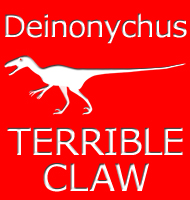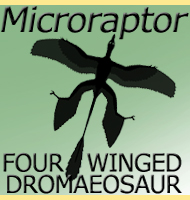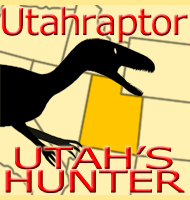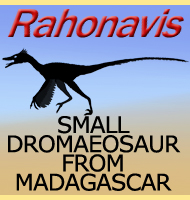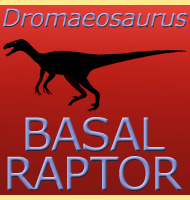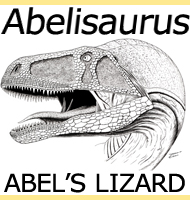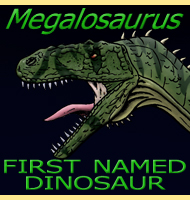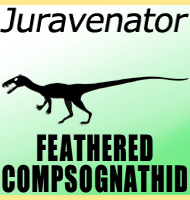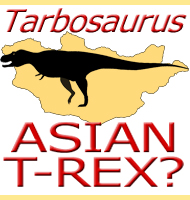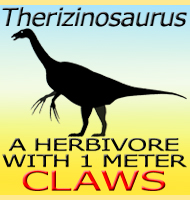


Balaur
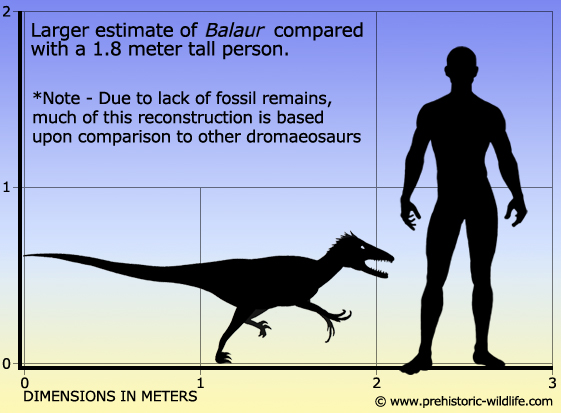
Name: Balaur
(After a dragon in Romanian folklore).
Phonetic: Ba-la-ur.
Named By: Zoltan Csikil, Matyas Vremir, Stephen
L. Brusatte & mark A. Norell - 2010.
Classification: Chordata, Reptilia, Dinosauria,
Saurischia, Theropoda, Dromaeosauridae, Eudromaeosauria,
Velociraptorinae.
Species: B. bondoc (type).
Diet: Carnivore.
Size: Estimated between 1.8 and 2.1 meters
long.
Known locations: Romania - Sebes Formation.
Time period: Early Maastrichtian of the Cretaceous.
Fossil representation: Partial post cranial remains.
The
dromaeosaurids
are a very popular group of dinosaurs that all share a
few common features. These include reasonably lightweight build,
long stiff tails for balance, legs and pelvis adapted for very fast
running and a large sickle shaped claw on the second toe of each foot.
Balaur however is a dromaeosaur with a difference;
instead of having
one sickle shaped claw on each foot it had two. These claws were on
the second and first toes, and seem to be the principal killing
weapons since the hands are known to have one digit less than most
other known dromaeosaurids.
In
popular fiction the large
sickle claws are usually interpreted as slashing weapons that could
open up the side of an animal in a single stroke, an idea based upon
very early ideas about dinosaurs like Balaur.
However more modern
analysis has produced scenarios where the sickle claws are more suited
to stabbing rather than slashing. Additionally they may have also
been used for getting a grip onto similarly sized or larger prey, and
in the case of Balaur, the two sickle claws may
have been to
compensate for a lack of one of the hand digits.
Balaur
has a number of other
distinctive features that distinguish it from other dromaeosaurids,
but overall it seems to have been more heavily built than its
relatives. Palaeontologists are able to tell this because the bones,
particularly those of the limbs, are shorter and more robust than in
the closest relatives. This suggests that Balaur
was built for power
rather than high speed. It is curious that a dinosaur from a
typically fast and lightweight family line would deviate so much from
the others, but the reasons for why may be down to environmental
factors from where it lived.
So
far Balaur remains have
only been found in Romania from a part that back in the late Cretaceous
period was actually separated from the mainland. Today we now call
this landmass Hateg Island (after the Hateg Basin, which it would
form after its collision with mainland Europe), and this island is
particularly noted for the large variety of dinosaurs that have been
recovered from there. The most interesting fact about this dinosaur
is that they included varieties such as sauropods and ornithopod
hadrosauroids. On the mainland these varieties could comfortably grow
up to ten meters long and probably more for certain genera, but on
Hateg Island the typically large dinosaurs like sauropods grew much
smaller than their mainland relatives.
The
reason for this is a
process called insular dwarfism. Island ecosystems are fragile
because there is a reduced land mass for plants to grow upon. This
means that herbivorous animals that feed upon plants have less food,
and no option to search elsewhere because they are surrounded by so
many miles of sea, they cannot reach other areas upon the mainland.
Another factor to consider is that for a species of herbivores to
survive, you need many individuals, perhaps as many as a few
hundred to avoid any negative effects on inbreeding. The one logical
result for large animals that find themselves living in such restricted
ecosystems is that they grow smaller, something that means they do
not need to eat so much food, so they don’t exhaust the available
supply.
With
an estimated size around
the two meter mark, Balaur does not seem to have
grown small by
insular dwarfism, many mainland varieties of dromaeosaur also grew
to this size with some being larger, and some even being smaller.
But on Hateg Island Balaur would have had access
to dwarf sauropods
like Magyarosaurus
and hadrosaurids
like Telmatosaurus.
Although
much smaller than their mainland counterparts, these types of
herbivorous dinosaurs would have still been quite powerfully built,
and arguably not that fast, at least when compared to a
dromaeosaurid like Balaur. This could be where
the more muscular
legs and double sickle claws on each foot could have come in; they
would have given dinosaurs like Balaur a
significant edge when
attacking them. Additionally in the absence of large theropods like
those known in larger continental landmasses, dromaeosaurids like
Balaur would have found itself elevated to the
status of apex predator
for the ecosystems.
The
name Balaur is a
reference to a dragon in Romanian folklore. Although many prehistoric
animals have been after dragons (for example the archosaur Smok
was
named after a dragon in Polish folkore) the name has a double meaning
since dragons are seen as winged flying creatures, and dromaeosaurid
dinosaurs are treated as being very close to the ancestors of birds.
The type species name B. bondoc means ‘boned
oak’ and is based
upon the squat appearance of the holotype remains. Out of all the
other dromaeosaurids, Balaur is considered to be
most closely related
to those like Velociraptor
from Asia.
*Special note - While Hateg Island is especially well noted for its dwarf dinosaurs, at least one giant has been found there. This refers to the pterosaur Hatzegopteryx, and although known from only partial remains, these indicate that it was one of the largest pterosaurs of all time.
Further reading
- An aberrant island-dwelling theropod dinosaur from the Late
Cretaceous of Romania - Proceedings of the National Academy of Sciences
107(35):15357-15361 - Z. Csiki, M. Vremir, S. L. Brusatte & M.
A. Norell - 2010.
- The Osteology of Balaur bondoc, an
Island-Dwelling Dromaeosaurid
(Dinosauria: Theropoda) from the Late Cretaceous of Romania - Bulletin
of the American Museum of Natural History 374: 1-100. - S. L. Brusatte,
M. T. S. Vremir, Z. N. Csiki-Sava, A. H. Turner, A. Watanabe, G. M.
Erickson & M. A. Norell - 2013.
----------------------------------------------------------------------------
Random favourites
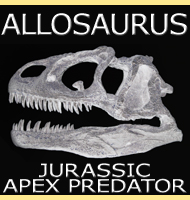 |
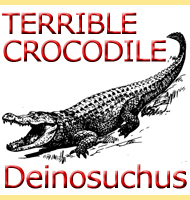 |
 |
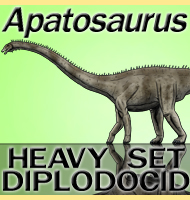 |
